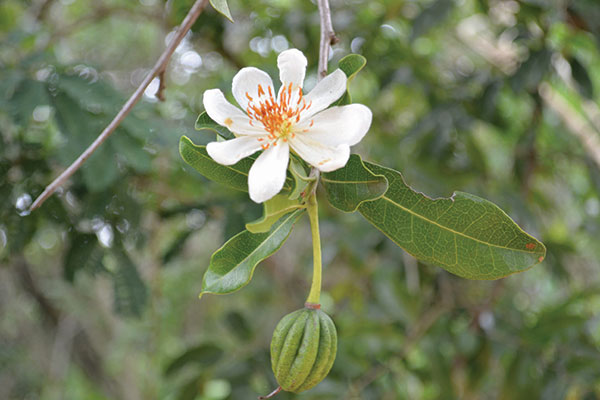AGRIPULSE – NORTH WEST - Xylotheca kraussiana, or African-dogrose, is part of the ACHARIACEAE family. Plants in this family produce cyanide compounds as a natural pesticide.
When an insect or animal chews the leaves, these chemicals mix to form a ‘cyanide booby-trap’, poisoning the predator by causing conditions where oxygen delivery, uptake, or use by tissues is inadequate, often associated with carbon dioxide retention. Studies show that leaf extracts from the African-dogrose contain acetone, which has antifungal properties against agricultural fungi. Acetone, found in nature and the human body, can irritate eyes, nose, and skin upon exposure.
The name “dogrose” is not related to dogs, but stems from a historical belief that the roots of the Rosa canina plant, native to Europe, western Asia, and northwest Africa, could cure rabies. The Rosa canina (Rose-family) plant is not related to Xylotheca kraussiana.
The botanical name comes from the Greek words xylon, meaning woody, and theke, meaning capsule, which describes the woody capsule of the plant. The term kraussiana is named after CFF Krauss, a German scientist and plant collector who collected over 3 200 species of plants in the Cape and Kwa-Zulu Natal (1812–1890). Although the sweet-scented flowers resemble roses, the African-dogrose is not actually a rose; the name refers to the resemblance between the flowers of Rosa canina and Xylotheca kraussiana. The flowers of Xylotheca kraussiana also resemble those of another indigenous species, Oncoba spinosa (snuff-box tree).
The natural distribution of this species is restricted to the Maputaland Centre of Plant Endemism, located along the eastern coastal regions of South Africa, Mpumalanga, and Mozambique.
The tree has male or bisexual flowers that bloom from spring to summer. The colorful flowers and fruits are used in traditional crafts and decorations. The flowers attract various pollinators that contribute to the sustainability of the plant species. Additionally, it serves as the larval food source for Acraea oncaea and A. petraea butterflies.
The fruit is an ovoid woody capsule with longitudinal ridges. It starts green, turns yellow as it ripens, and splits into roughly eight thick sections. Inside are reddish-black seeds covered by an edible bright red, hairy aril. Birds and small mammals consume fleshy fruits, helping in seed dispersal and genetic diversity.
The African-dogrose plays a crucial role in its eco system, roots prevent soil erosion, especially in areas susceptible to heavy rainfall and degradation. Additionally, the roots possess medicinal properties used traditionally.










